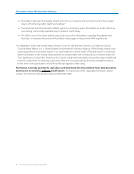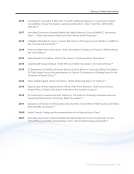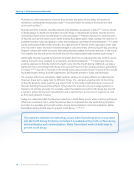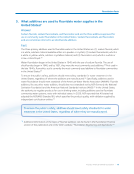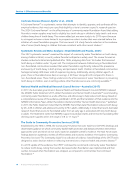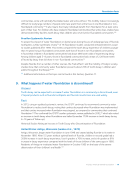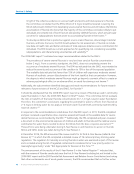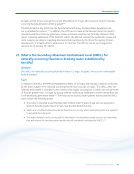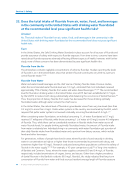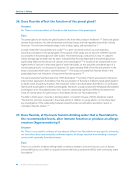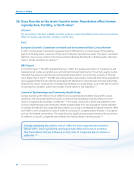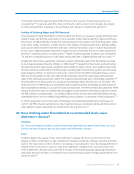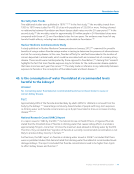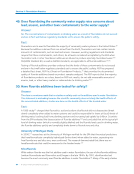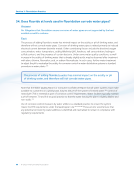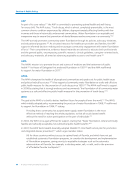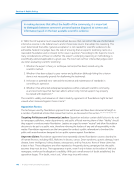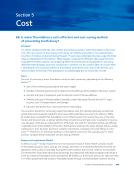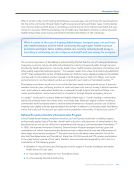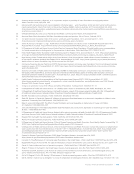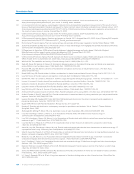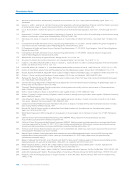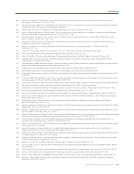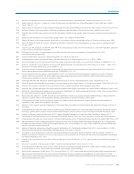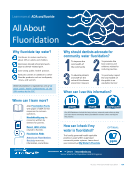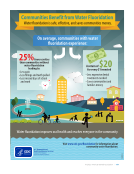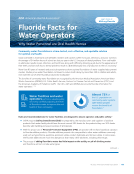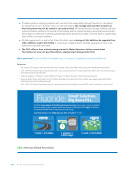© 2025 American Dental Association l 83
Fluoridation Facts
NSF/ANSI Standard 60367 provides for the purity of drinking water additives by limiting additives’
contributions of harmful contaminants to drinking water. The Standard also provides for safety assurances
from production through distribution to ensure product quality is maintained. Additionally, the Standard
requires documentation of the purity of the additives, including specific criteria for products imported from
other countries. NSF/ANSI Standard 61368 is a related standard that provides guidance for equipment
and products used in water treatment plants that come in contact with drinking water. Both NSF/ANSI
standards were developed by a consortium of associations, including NSF, AWWA, the Association of
State Drinking Water Administrators (ASDWA), and the Conference of State Health and Environmental
Managers, with support from the EPA.36
Fluoride additives, like all of the more than 40 additives typically used in water treatment, are classified
as “water-grade” additives meeting NSF Standard 60 requirements. Examples of other water-grade
additives that are commonly used in water plant operations are chlorine (gas), ferrous sulfate,
hydrochloric acid, sulfur dioxide, and sulfuric acid.92
Sometimes those who raise concerns about community water fluoridation express the view that
they are not really opposed to fluoridation but are opposed to the use of “industrial-grade” fluoride
additives. There is no industrial grade for fluoride additives, but industrial users (or large-scale
consumers) establish their own product requirements. Some opponents of water fluoridation may
even go so far as to state that they would support fluoridation if the process was implemented with
pharmaceutical-grade fluoride additives that were approved by the FDA. On the surface, this may
appear to be a “common sense” approach. In fact, this is usually a ploy whose only real purpose is to
stop fluoridation. First, the EPA, not the FDA, has regulatory authority for additives used in public
water systems. Second, and perhaps most importantly, the US Pharmacopeia (USP) monograph on
sodium fluoride does not provide for certification of quality by an independent credentialing body.36,91
Third, the USP and the National Formulary (USP-NF) standards used to formulate prescription drugs
are not appropriate for water fluoridation additives, as they could actually allow higher levels of
contaminants to be introduced into drinking water than is allowed by current EPA standards.36,91
According to the CDC:91
The USP does not provide specific protection levels for individual contaminants, but establishes a
relative maximum exposure level for a group of related contaminants. Some potential impurities
have no restrictions by the USP, including arsenic, some heavy metals regulated by the EPA,
and radionuclides. Given the volumes of chemicals used in water fluoridation, a pharmaceutical
grade of sodium fluoride for fluoridation could potentially contain much higher levels of arsenic,
radionuclides, and regulated heavy metals than an NSF/ANSI Standard 60-certified product.
Additional information about this topic can be found in this Section, Question 49.
Lastly, the use of a USP-grade sodium fluoride product is more likely to result in water plant personnel
being exposed to fluoride dust, as it is more powder-like than the preferred AWWA-grade sodium
fluoride, which is crystalline and thus minimizes dusting during handling.36
Additional information about this topic can be found in this Section, Question 52.
Fluoridation Facts
NSF/ANSI Standard 60367 provides for the purity of drinking water additives by limiting additives’
contributions of harmful contaminants to drinking water. The Standard also provides for safety assurances
from production through distribution to ensure product quality is maintained. Additionally, the Standard
requires documentation of the purity of the additives, including specific criteria for products imported from
other countries. NSF/ANSI Standard 61368 is a related standard that provides guidance for equipment
and products used in water treatment plants that come in contact with drinking water. Both NSF/ANSI
standards were developed by a consortium of associations, including NSF, AWWA, the Association of
State Drinking Water Administrators (ASDWA), and the Conference of State Health and Environmental
Managers, with support from the EPA.36
Fluoride additives, like all of the more than 40 additives typically used in water treatment, are classified
as “water-grade” additives meeting NSF Standard 60 requirements. Examples of other water-grade
additives that are commonly used in water plant operations are chlorine (gas), ferrous sulfate,
hydrochloric acid, sulfur dioxide, and sulfuric acid.92
Sometimes those who raise concerns about community water fluoridation express the view that
they are not really opposed to fluoridation but are opposed to the use of “industrial-grade” fluoride
additives. There is no industrial grade for fluoride additives, but industrial users (or large-scale
consumers) establish their own product requirements. Some opponents of water fluoridation may
even go so far as to state that they would support fluoridation if the process was implemented with
pharmaceutical-grade fluoride additives that were approved by the FDA. On the surface, this may
appear to be a “common sense” approach. In fact, this is usually a ploy whose only real purpose is to
stop fluoridation. First, the EPA, not the FDA, has regulatory authority for additives used in public
water systems. Second, and perhaps most importantly, the US Pharmacopeia (USP) monograph on
sodium fluoride does not provide for certification of quality by an independent credentialing body.36,91
Third, the USP and the National Formulary (USP-NF) standards used to formulate prescription drugs
are not appropriate for water fluoridation additives, as they could actually allow higher levels of
contaminants to be introduced into drinking water than is allowed by current EPA standards.36,91
According to the CDC:91
The USP does not provide specific protection levels for individual contaminants, but establishes a
relative maximum exposure level for a group of related contaminants. Some potential impurities
have no restrictions by the USP, including arsenic, some heavy metals regulated by the EPA,
and radionuclides. Given the volumes of chemicals used in water fluoridation, a pharmaceutical
grade of sodium fluoride for fluoridation could potentially contain much higher levels of arsenic,
radionuclides, and regulated heavy metals than an NSF/ANSI Standard 60-certified product.
Additional information about this topic can be found in this Section, Question 49.
Lastly, the use of a USP-grade sodium fluoride product is more likely to result in water plant personnel
being exposed to fluoride dust, as it is more powder-like than the preferred AWWA-grade sodium
fluoride, which is crystalline and thus minimizes dusting during handling.36
Additional information about this topic can be found in this Section, Question 52.










